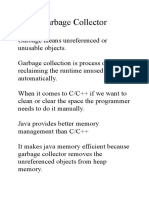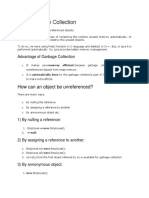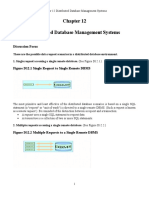0% found this document useful (0 votes)
13 views4 pagesUpper GC in Java
Garbage Collection in Java is an automatic memory management process that frees memory by deleting unreachable objects, preventing memory leaks and OutOfMemoryErrors. Key concepts include heap memory organization into Young and Old generations, object reachability, and the three main steps of garbage collection: mark, sweep, and compact. Various types of garbage collectors exist, such as Serial, Parallel, G1, and ZGC, each suited for different application needs, while best practices recommend allowing the JVM to manage garbage collection autonomously.
Uploaded by
splusmm24Copyright
© © All Rights Reserved
We take content rights seriously. If you suspect this is your content, claim it here.
Available Formats
Download as PDF, TXT or read online on Scribd
0% found this document useful (0 votes)
13 views4 pagesUpper GC in Java
Garbage Collection in Java is an automatic memory management process that frees memory by deleting unreachable objects, preventing memory leaks and OutOfMemoryErrors. Key concepts include heap memory organization into Young and Old generations, object reachability, and the three main steps of garbage collection: mark, sweep, and compact. Various types of garbage collectors exist, such as Serial, Parallel, G1, and ZGC, each suited for different application needs, while best practices recommend allowing the JVM to manage garbage collection autonomously.
Uploaded by
splusmm24Copyright
© © All Rights Reserved
We take content rights seriously. If you suspect this is your content, claim it here.
Available Formats
Download as PDF, TXT or read online on Scribd
/ 4


























































































